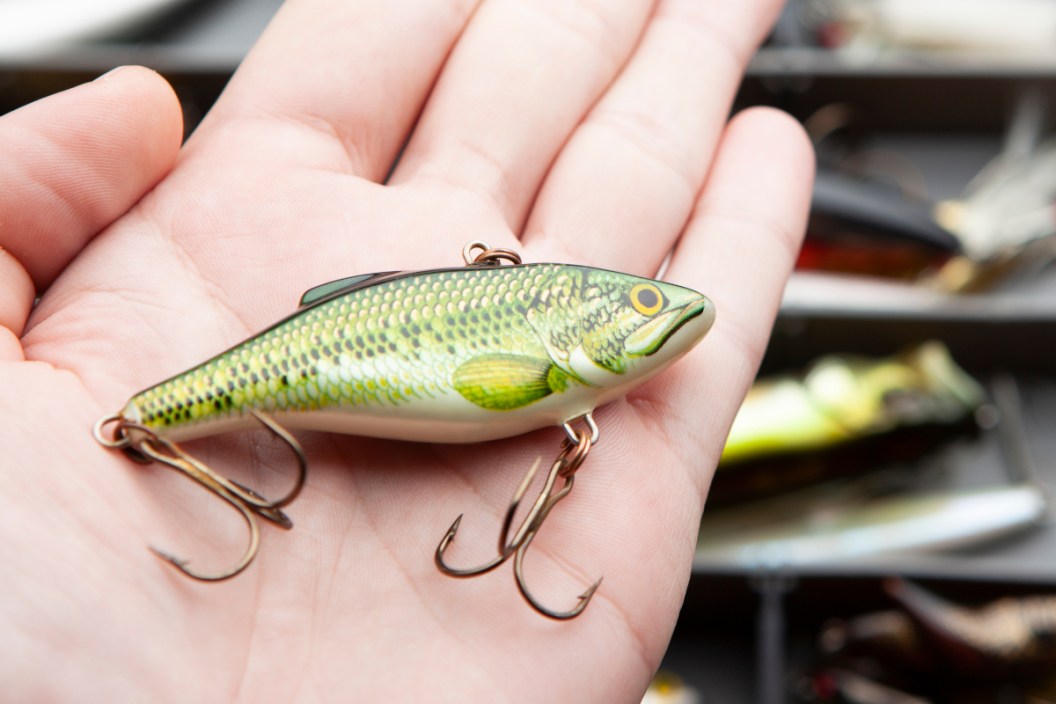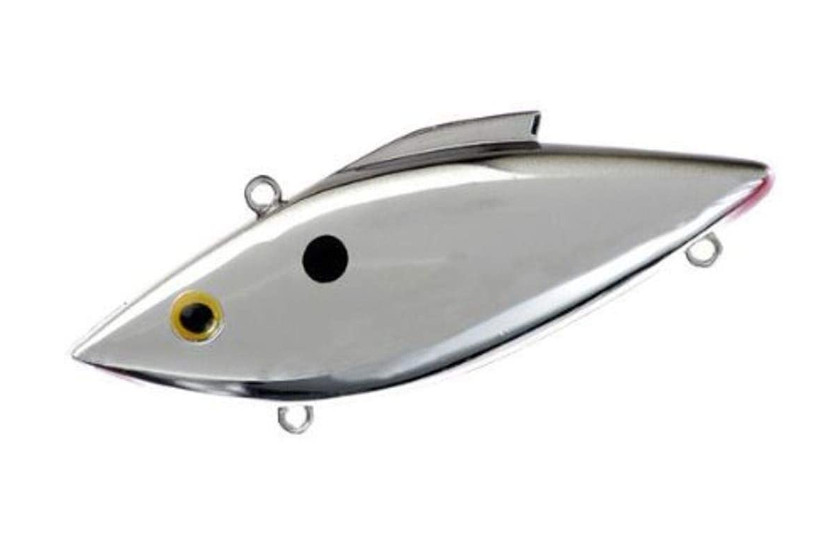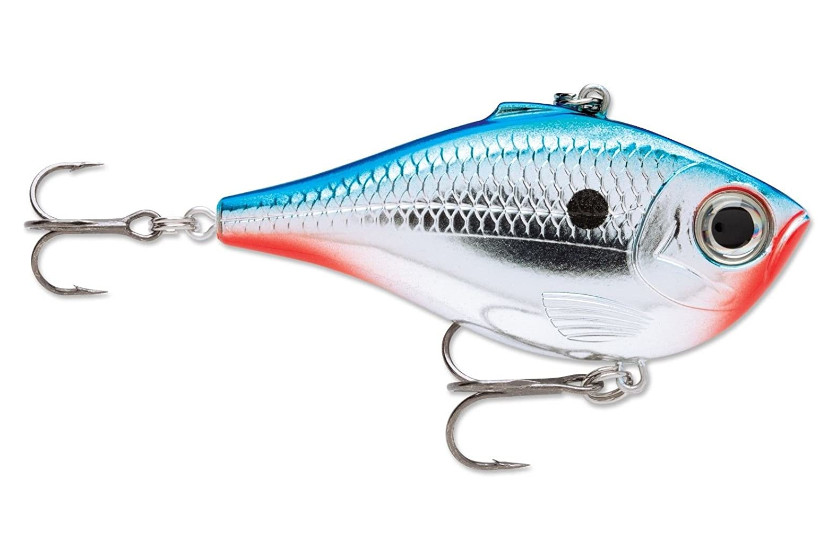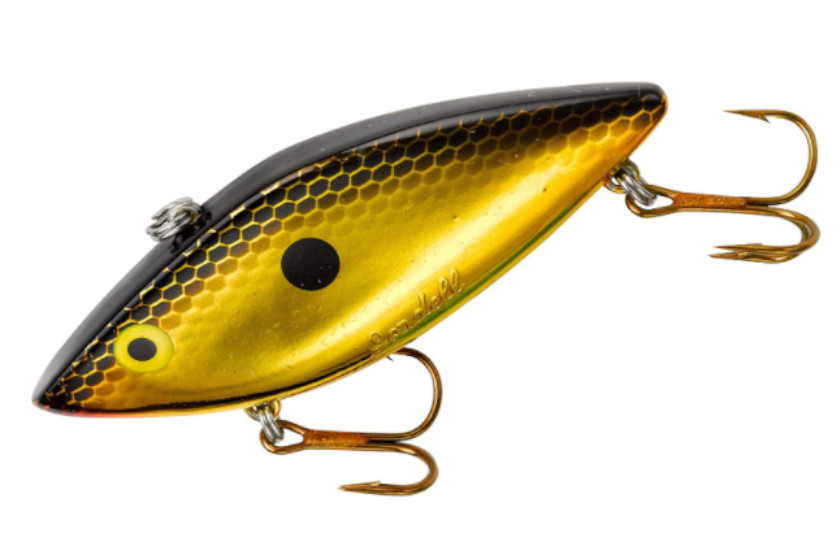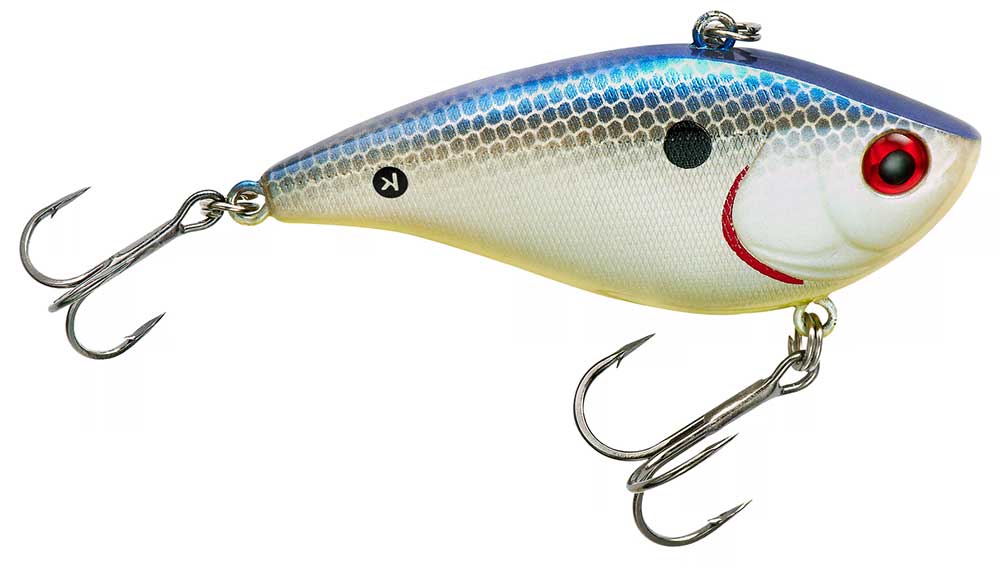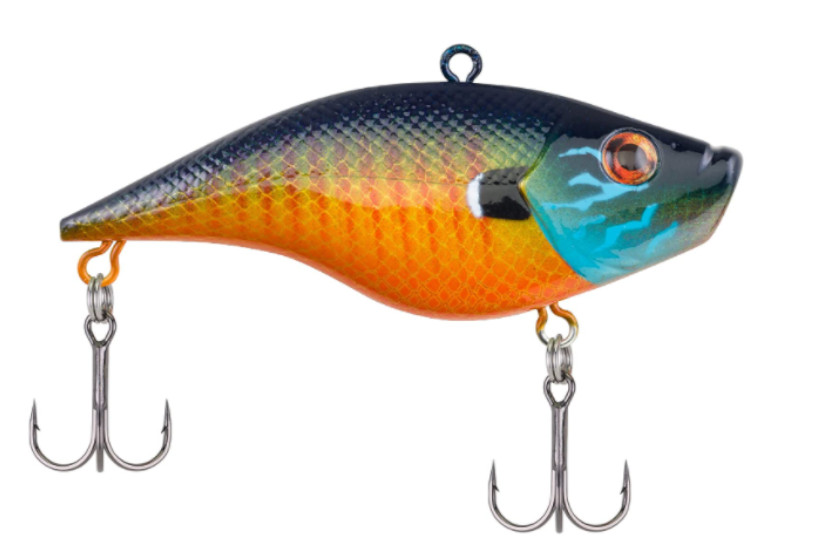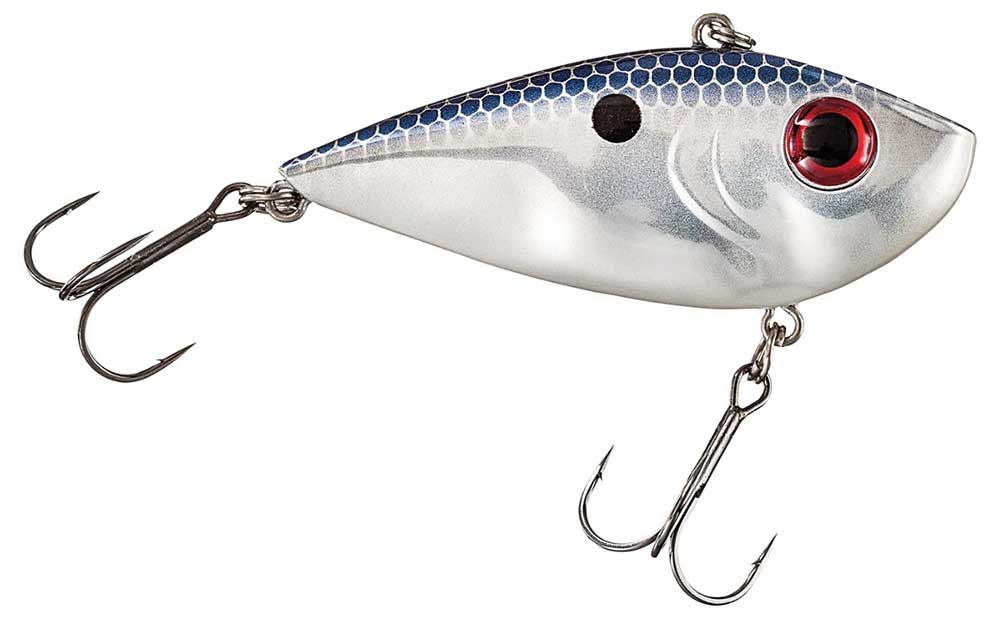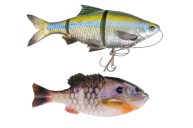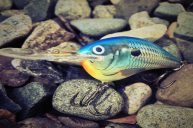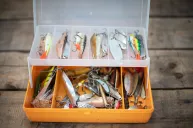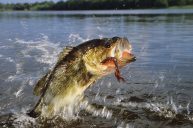The lipless crankbait is a time-tested classic. Here's the lowdown, plus a few select choices.
Few fishing lures can top the simplicity and effectiveness of the lipless crankbait.
Anglers have been using these lures to mimic baitfish for decades, and they are an annual favorite for bass fishing. Sometimes called "rattle baits" for the common rattling sound many of them feature, lipless crankbaits are great for both new and novice anglers alike for their simplicity and effectiveness on big fish.
Lipless crankbaits are a great way to draw reaction strikes from fish in deeper water and they are an effective search tool for certain times of the year when the fish are often scattered and difficult to find (perhaps even more so than the popular spinnerbait).
In an effort to go in depth on this classic fishing lure, we will discuss what you need to fish them, the best times to utilize them, and most importantly, we'll look at some of our top picks for lipless crankbaits on the market today.
What do you need to throw lipless crankbaits?
Most professional bass anglers use baitcasting gear to work these hard baits, mostly because they want to keep the rod tip low for more leverage to set the hook on a strike. Most anglers use a medium-action rod, but don't be afraid to shift to a heaver rod if you are targeting larger bass or fish in heavier cover.
In the past, heavy monofilament was the main way most anglers would fish lipless crankbaits. However, since the innovation of Fluorocarbon and braid, these two have arguably taken over as the lines of choice for these deep diving crankbaits. Mostly this is because they offer more abrasion resistance for ripping through the weeds. Another good reason to pick fluorocarbon over mono is because of the density of the line. It's greater than monofilament, which is going to reduce slack. This has two effects: it helps you make more hook-ups on strikes, and it also will allow your lure to run deeper, helping you to get the most from a deep diving crankbait.
Whatever type of line you choose, most pros agree it's best to use a slower gear ratio on your reel. That's going to crank those lures deeper with more ease when you want to reach the fish when they are suspended or hanging on the edges of deep cover. Fortunately, most anglers already have a setup they are using for jerkbaits, swimbaits, or swim jigs, and al will work equally well for a lipless crank.
When should you throw lipless crankbaits?
For the most bass fishing purposes, lipless crankbaits are a lure for late winter, early spring, and fall. They're going to work best when water temperatures are just starting to rise or drop, and are less productive in the heat of the summer.
One of the best fishing tips we can pass on is that 40 to 60 degrees is the ideal temperature for working a lipless crank. This is usually when the fish are either staging up for the spawn or when they are filling their bellies in anticipation of winter and cold water slowing their activity. They're perfect when the fish are staging just outside of shallow water in depths of 10 to 20 feet.
In the spring, most largemouth and smallmouth bass will be staging at these depths and snack heavily on shiners, crawfish, or bluegills. They're a little more apt to chase at these times compared to the late spring and summer months. By that point the fish are usually holding in the shallows anyway, which is going to lessen the effectiveness of lipless crankbaits anyway.
Remember that lipless crankbaits are fast lures. You are not going to see success with them when fish are more lethargic in the hottest parts of summer. Just remember to keep lipless crankbaits in mind whenever your electronics are showing the fish holding in deep water, and especially if they are in a school.
Where should you fish a lipless crankbait?
As we've already noted, fish holding deep water between 10 to 20 feet are usually going to be the most susceptible to lipless crankbaits. However, you will want to look for one other factor, and that's vegetation.
There are a few schools of thought here. Depending on where you're fishing, the difficulty of working a lipless crankbait through the slop can vary widely. It can be nice and easy or extremely difficult. In places with thick milfoil or other heavy weeds, you may need a heavier fishing line to work through it.
If you can find submerged vegetation and keep your presentation over the top of it, you're likely to get a lot of strikes. Some pros prefer to rip right through thick grasses, or they use a "yo-yo" technique where they crank the bait and then let it fall, then crank it, and let it fall. This can give the appearance of a slowly dying baitfish, which many big bass find impossible to resist.
Want to know about some of the best crankbaits you should consider adding to your tacklebox?
Products featured on Wide Open Spaces are independently selected by our editors. However, when you buy something through our links, we may earn a commission.
Bill Lewis Rat-L-Trap
This is usually THE lure most anglers think of think of when they imagine lipless crankbaits. Designer Bill Lewis named this lure after his rust bucket of a car in the late 1960s and it's been a staple ever since. This lure helped win the Bassmaster Classic in 2007. They're available in a plethora of color schemes to help match the color of minnows and shad in your area. This lure is also still handmade here in the U.S.A., so you can feel good about buying American.
Rapala Rippin' Rap
It's hard to beat the tight wobble of a Rapala bait of any kind. The Rippin' Rap is quickly becoming one of the most popular lipless crankbaits on the market. This bait features Premium VMC back nickel treble hooks and is available in 17 different color combinations. We like the textured bodies and holographic eyes for adding a bit more realism that can help draw strikes from fish that are being a bit more picky about what they'll strike.
Cotton Cordell Super Spot
This one has been on the market for a long time simply because it works. The other nice thing is that it's usually a little bit cheaper than some of the other options on the market today. The natural wobble of this one will draw strikes from a variety of species. There are more than a dozen color options available too so you can match it to everything from shiners to crawfish based on what the fish are feeding on the heaviest.
Booyah One Knocker
Another popular and affordable lipless crankbait that is perfect for slashing through thick vegetation where the big bass are hiding. Booyah offers this crankbait in more than a dozen different color combinations and three sizes to match your fishing situation perfectly.
Berkley Warpig
Aside from having a really cool name, we've seen firsthand how much time and effort goes into the design of Berkley baits when we visited their labs. This lure was designed with the help of crankbait guru David Fritts and has a blunted nose that helps it deflect off hard cover without snagging. The design of the body is also made not just for great action, but long casts too. It's available in multiple sizes and 18 color schemes.
Strike King Red Eye Shad
The Red Eye shad is one of the more popular lipless crankbaits on the pro tours with guys like Kevin VanDam depending on it to help them finish in the money in tournaments season after season. Those red 3D eyes help with the wounded baitfish illusion on big fish. The unique shape of this one gives it some great action on free fall. The Red Eye is also available in a bevy of color options, perhaps more than any other lipless crankbait on the market today.
For more outdoor content from Travis Smola, be sure to follow him on Twitter and check out his Geocaching and Outdoors with Travis YouTube channels.
NEXT: WHAT TO USE FOR SPRING BASS FISHING: A COMPLETE GUIDE
WATCH
